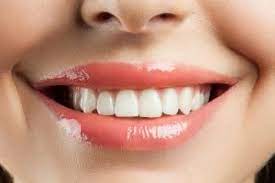Health
Cavity Prevention Tips From A General Dentist

Cavities can be painful and costly. You might wonder how to avoid them. A dentist in Pekin, IL is ready to help you protect your smile. The key is simple habits that can make a huge difference. This guide offers practical tips from a general dentist. You will learn how to keep cavities away and maintain healthy teeth.
First, focus on daily brushing. Do it twice with fluoride toothpaste. Second, floss between teeth every day. It removes food that brushing misses. Third, limit sugary snacks and drinks. Sugar feeds the bacteria that cause decay.
Regular check-ups are important. Visit your dentist every six months. Professional cleanings catch problems early. Also, consider dental sealants. They offer extra protection for your teeth.
These straightforward steps can help you avoid cavities. You will feel empowered and confident in caring for your teeth. Embrace these habits and enjoy a healthier, pain-free future.
Brushing Techniques
Effective brushing involves more than just moving a toothbrush around. Choose a soft-bristled brush and hold it at a 45-degree angle to your gums. Use gentle, circular motions to cover each tooth surface. Spend at least two minutes brushing. Focus on all areas, including the back teeth where cavities often start.
Replace your toothbrush every three months or sooner if it shows wear. A worn brush is less effective at cleaning your teeth. Here is a simple cleaning schedule:
| Task | Frequency |
|---|---|
| Brushing | Twice Daily |
| Flossing | Once Daily |
| Dentist Visit | Every 6 Months |
| Brush Replacement | Every 3 Months |
The Importance of Flossing
Flossing is often skipped, but it is crucial for cavity prevention. Flossing removes food particles and plaque from between teeth. When plaque sits between teeth, it turns into tartar, which can cause cavities and gum disease. Use approximately 18 inches of floss, winding most of it around each middle finger. Gently insert the floss between your teeth and curve it into a “C” shape, moving it up and down along the side of each tooth.
Diet and Oral Health
Your diet impacts your dental health. Foods and drinks high in sugar and acid can wear down tooth enamel, leading to cavities. Instead, choose fruits, vegetables, nuts, and cheese. These foods help clean your teeth and provide essential nutrients.
Water is also vital. It rinses away food particles and keeps your mouth hydrated. Limit soda, candy, and sticky foods. They increase the risk of cavities.
Sealants and Fluoride Treatments
Dental sealants provide an additional layer of protection. They are thin coatings applied to the chewing surfaces of back teeth. Sealants prevent food and bacteria from getting stuck in the grooves. Ask your dentist about sealants, especially for children. Fluoride is another powerful tool against cavities. It strengthens tooth enamel and reverses early decay. Many communities have fluoridated water. Consider fluoride treatments during dental visits for extra protection.
Regular Dental Check-Ups
Dental check-ups are not just about cleaning. Dentists look for signs of decay, gum disease, and other issues. Early detection and treatment can save you time and discomfort. During your visit, your dentist will offer personalized advice to improve your oral health.
These strategies can help you achieve a cavity-free smile. Remember, caring for your teeth is a lifelong commitment that pays off. Regular habits protect you from pain and preserve your smile. Take charge of your dental health today.
Health
How CPAs Offer Strategic Guidance To Executives

You need clear guidance to navigate complex business decisions. Certified Public Accountants (CPAs) stand ready to assist you. Their role isn’t just about crunching numbers. They offer strategic advice that can reshape your company’s future. For executives, this means getting insights that drive smart choices. When you’re dealing with real estate accounting in Alpharetta, CPAs bring tailored solutions. They understand both local nuances and broader market trends. This ensures you’re making informed moves. A CPA’s expertise includes risk assessment and financial planning. They help you sidestep potential pitfalls while boosting growth. By leaning on their knowledge, you gain a crucial partner in decision-making. You’re not just surviving; you’re thriving in a competitive environment. It’s this kind of strategic guidance that allows your business to flourish. With a CPA by your side, you’re better equipped to face challenges head-on and seize opportunities.
The Role of Strategic Guidance
Strategic guidance is crucial in ensuring that executives make sound decisions. A CPA provides insights that steer your business toward success. By analyzing financial data, CPAs identify trends and opportunities. They help you plan for short-term and long-term goals. As an executive, you need a clear view of your financial landscape. CPAs give you that perspective through detailed reports and clear recommendations.
Financial Planning and Analysis
Financial planning is not just about budgeting. It’s about understanding where your business stands and where it needs to go. CPAs offer a comprehensive analysis of your financial health. This includes cash flow management and resource allocation. They provide a roadmap for achieving financial stability. With this guidance, you make informed decisions that align with your strategic objectives.
Risk Management
Every business faces risks. CPAs help identify these risks early. They offer strategies to mitigate them effectively. Whether it’s market volatility or operational challenges, CPAs provide solutions that protect your interests. They ensure you’re prepared for unexpected events. This proactive approach minimizes disruptions and keeps your business on track.
Data-Driven Decision Making
In today’s digital age, data is valuable. CPAs use data analytics to provide clear insights. They analyze trends and patterns to guide your decisions. This data-driven approach boosts confidence in your choices. You’re not just guessing; you’re making informed decisions based on solid evidence.
Cost-Benefit Analysis: CPA vs. No CPA
| Factor | With CPA | Without CPA |
|---|---|---|
| Financial Insights | In-depth analysis, strategic planning | Limited understanding, potential oversights |
| Risk Management | Proactive identification, mitigation strategies | Reactive, increased exposure to risks |
| Resource Allocation | Optimized, aligned with goals | Potential misallocation, inefficiencies |
Tax Planning
Tax laws can be complex. CPAs navigate these laws to ensure compliance. They help you take advantage of deductions and credits. This reduces your tax liability and increases your bottom line. By planning ahead, CPAs make sure you’re prepared for tax season, avoiding surprises and penalties.
Collaboration and Communication
CPAs work closely with you and your team. They facilitate communication between departments. This collaboration ensures everyone is aligned with the company’s goals. By fostering a culture of transparency, CPAs create a cohesive, informed workforce.
Conclusion
CPAs are more than accountants. They are strategic partners who guide you towards success. Through financial planning, risk management, and data-driven analysis, they help you make informed choices. A CPA provides the clarity you need to navigate complex situations. With their expertise, you gain a competitive edge. The strategic guidance of a CPA is a valuable asset in achieving your business goals. To learn more about the role of CPAs in business, visit American Institute of CPAs or Accounting Education for additional resources.
Health
How General Veterinarians Provide Peace Of Mind For Families

You want your pets to be happy and healthy. General veterinarians play a key role in achieving that. Their expertise provides peace of mind for families who depend on them for their beloved animals’ well-being. You trust your pets with these professionals who offer necessary care and build lasting relationships. At an Austin animal hospital, you find knowledgeable veterinarians who understand your concerns. They provide preventive care, diagnose problems early, and guide you through treatments. This support ensures that your pets receive the best care possible. Regular check-ups, vaccinations, and health advice help keep your pets safe. When you notice changes in your pet’s behavior, these veterinarians are ready to help. They know the importance of timely care and provide solutions that work. Visiting a general veterinarian becomes part of your routine, bringing comfort and security to your family. You feel reassured knowing your pets are in capable hands.
The Importance of Preventive Care
Preventive care is essential for maintaining your pet’s health. It includes vaccinations, flea and tick prevention, and regular check-ups. A general veterinarian helps you understand what your pet needs to stay healthy. They offer advice tailored to your pet’s specific requirements. At home, you can follow their guidelines to ensure your pet stays safe from common ailments.
Early Diagnosis and Treatment
Pets can’t tell you when they’re unwell, but changes in behavior or appetite might signal a problem. General veterinarians are trained to identify issues early. Early diagnosis means more effective treatment and a faster recovery. This proactive approach is crucial for your pet’s long-term health and happiness.
Building Trust and Relationships
Regular visits to your veterinarian help build trust between you, your pet, and the veterinarian. Over time, your veterinarian becomes familiar with your pet’s history and behavior. This familiarity allows them to detect subtle changes in your pet’s health. You feel at ease discussing concerns and receive advice that suits your specific situation.
Vaccination Schedule
Vaccinations protect your pets from diseases. General veterinarians create a schedule tailored to your pet’s needs. Keeping track of this schedule helps maintain your pet’s health. Here’s a comparison table for common vaccinations:
| Pet Type | Core Vaccines | Frequency |
|---|---|---|
| Dog | Rabies, DHPP | Annually |
| Cat | Rabies, FVRCP | Annually |
Nutrition and Weight Management
Nutrition impacts your pet’s well-being. General veterinarians provide guidance on proper diet and weight management. They consider your pet’s age, breed, and activity level to recommend suitable food options. This advice ensures your pet stays energetic and avoids weight-related issues.
Addressing Behavioral Changes
Behavioral changes can indicate health problems. Veterinarians assess these changes and provide solutions. Whether it’s a new diet or a treatment plan, they help you address these issues effectively. This support ensures your pet remains content and comfortable.
Emergency Services and Expert Advice
In emergencies, general veterinarians offer critical assistance. Knowing you have access to expert care during crises brings peace of mind. Veterinarians provide guidance on handling emergencies and offer resources for further support. For more information on pet emergency preparedness, visit the Ready.gov website.
Conclusion
General veterinarians are invaluable in caring for your pets. They provide preventive care, early diagnosis, and treatment. You trust them with your pets’ health and find comfort in their expertise. Their support ensures your pets live happy, healthy lives. They offer a calm reassurance that your family needs. Remember to schedule regular check-ups and follow your veterinarian’s advice for a healthy pet. By doing so, you contribute to your pet’s well-being and the peace of mind they bring to your home.
Health
How CPAs Use Technology To Improve Financial Accuracy

Technology transforms the way you manage finances. CPAs, like a tax accountant Orlando, use advanced tools to ensure precise financial records. This shift to digital not only saves time but also reduces human errors. Automated systems streamline tasks and provide real-time data that helps CPAs make informed decisions. You benefit from improved accuracy, which is crucial during tax season. Secure cloud storage keeps your financial information protected and accessible. Additionally, AI can predict trends and offer insights, allowing you to plan better. You can trust that with technology, your financial statements are accurate and up-to-date. Many CPAs are adopting this tech-driven approach to serve you better. As a result, you gain peace of mind knowing your finances are in capable hands. Whether it’s managing expenses or preparing reports, technology enhances every step of the process. It’s a reliable way to ensure financial clarity and stability.
Automation in Accounting
Automation plays a key role in transforming accounting tasks. With the help of specialized software, CPAs can automate data entry, invoicing, and payroll. Automation reduces the risk of errors that often occur with manual processes. It also allows CPAs to focus on more important tasks, such as financial analysis. By adopting automation, CPAs can provide you with quicker, more precise results. This efficiency is especially beneficial during busy periods, such as the end of the fiscal year.
AI and Predictive Analytics
Artificial Intelligence (AI) and predictive analytics are becoming common in accounting. AI can analyze large sets of data quickly, providing insights that might be missed by human analysis. Predictive analytics can forecast financial trends, helping you make informed decisions about your financial future. Using AI, CPAs can identify potential risks and opportunities for you. This proactive approach ensures that you are always well-prepared for financial challenges. According to the IRS, accurate forecasting can significantly improve business planning.
Benefits of Cloud Computing
Cloud computing offers numerous advantages for managing financial data. It allows CPAs to store and access your financial information securely from anywhere. This accessibility means that updates and changes can be made in real-time, providing you with the most current information. Furthermore, cloud computing reduces the need for physical storage, saving both space and resources. It also enhances collaboration, allowing multiple users to work on the same data simultaneously.
Comparison: Traditional vs. Technology-Driven Accounting
| Aspect | Traditional Accounting | Technology-Driven Accounting |
|---|---|---|
| Data Entry | Manual, prone to errors | Automated, accurate |
| Data Access | Limited, location-based | Unlimited, cloud-based |
| Decision Making | Based on past data | Data-driven with AI insights |
| Efficiency | Time-consuming | Fast and streamlined |
Cybersecurity Considerations
While technology offers many benefits, cybersecurity is a critical consideration. It is important to ensure that your financial data is protected against cyber threats. CPAs use advanced security measures to safeguard your information. These measures include encryption, multi-factor authentication, and regular security audits. By prioritizing cybersecurity, CPAs ensure that your data remains confidential and secure.
The Way Forward
As technology continues to evolve, CPAs will integrate more advanced tools into their processes. These advancements promise to further enhance accuracy and efficiency. You can look forward to a future where financial management is more reliable and transparent. By leveraging technology, CPAs are equipped to meet your needs more effectively than ever before. For more information on the benefits of technology in accounting, visit Accounting.com.
Embracing technology in accounting transforms the way financial tasks are handled. By automating tasks, utilizing AI, and adopting cloud computing, CPAs provide you with accurate, up-to-date financial information. The shift from traditional methods to technology-driven solutions enhances efficiency and decision-making, offering you peace of mind. Cybersecurity remains a priority, ensuring your financial data is safe. With these advancements, you can manage your finances with confidence and clarity.
-

 Travel7 days ago
Travel7 days agoeSIM Revolution: Staying Connected Across Middle East and Asia Without Breaking the Bank
-
All1 week ago
Mega888 Malaysia: The Psychology Behind Winning and Responsible Play
-

 Health6 days ago
Health6 days agoInnovations In Pain Management Protocols At Small Animal Veterinary Hospitals
-

 Health6 days ago
Health6 days agoTeaching Kids Good Oral Hygiene With Family Dental Support
-

 Health6 days ago
Health6 days agoHow General Veterinarians Provide Peace Of Mind For Families
-

 Health6 days ago
Health6 days agoHow Pet Dental Care Prevents Systemic Illness
-

 Health6 days ago
Health6 days agoHow CPAs Offer Strategic Guidance To Executives
-

 Tech5 days ago
Tech5 days agoComplete Guide to Understanding What are Heat Pipes



